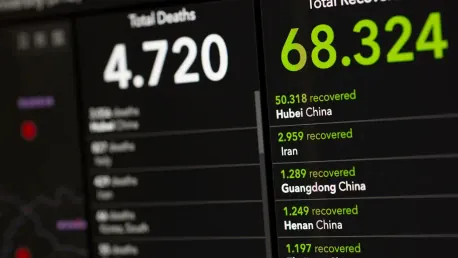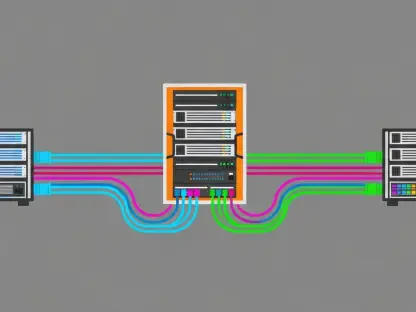Healthcare is undergoing significant changes as data plays an increasingly central role in the delivery of care, fundamentally transforming the identification of diseases, tailoring of treatment plans, and management of hospital resources. This influx of information ensures that care teams operate more effectively, with accurate insights becoming essential to enhancing patient care and tackling current healthcare challenges. The global predictive analytics market in healthcare was valued at $11.7 billion in 2022 and is anticipated to grow at a compound annual growth rate (CAGR) of 24.4% through 2030. This impressive growth signifies the industry’s increasing adoption of predictive models to forecast disease outbreaks, minimize hospital readmissions, and optimize treatment plans.
Understanding Predictive Healthcare Analytics
Predictive healthcare analytics involves using advanced data analytics techniques, which include artificial intelligence (AI), machine learning, data mining, and statistical modeling, to forecast future health outcomes based on historical data. Unlike traditional analytics, which focus on summarizing past events, predictive analytics anticipates trends and identifies potential risks in patient care. Major data sources for predictive analytics encompass Electronic Health Records (EHRs), insurance claims, medical imaging, and health surveys.
Predictive tools can analyze patterns in patient records to ascertain the likelihood of hospital readmissions or evaluate medication adherence to predict the onset of chronic diseases. This approach empowers healthcare providers to deliver timely interventions and improve patient outcomes. Predictive analytics in healthcare operates through three primary steps: data collection, data analysis, and prediction, creating a robust framework for decision-making in healthcare.
The Process of Predictive Analytics in Healthcare
Data Collection
Information is gathered from diverse sources, such as EHRs, patient registries, and administrative records. This forms a comprehensive dataset, which serves as the foundation for analysis. The quality and comprehensiveness of the data collected are crucial for the accuracy of predictive models. During the data collection phase, sources may include real-time data streams from wearable devices and patient-generated health data, enriching the dataset with comprehensive health indicators.
Data Analysis
Algorithms are employed to identify patterns and trends within the data. For instance, models can analyze patient demographics and medical history to highlight potential health risks. This step involves the use of machine learning and AI to process large volumes of data efficiently and accurately. Employing sophisticated algorithms, healthcare analysts can decode intricate health patterns, enabling quick identification of patients at risk for specific conditions and in need of personalized attention.
Prediction
The analyzed data is used to forecast outcomes, such as identifying patients at heightened risk for chronic conditions or determining the most effective treatment plans. These predictions enable healthcare providers to take proactive measures, improving patient outcomes and optimizing resource use. By forecasting future health outcomes, healthcare systems can allocate resources more effectively and prepare for patient care scenarios with higher accuracy.
Applications of Predictive Analytics in Healthcare
Supporting Personalized Care
Predictive analytics enables doctors to design treatment plans tailored to individual patient needs. Insights derived from medical history, genetics, and other data guide faster and more accurate decisions, improving diagnoses and supporting effective treatment choices. This personalized approach enhances patient satisfaction and outcomes. When doctors leverage predictive insights, they can anticipate disease progression and manage patient care with precision, benefiting both patients and healthcare providers.
Monitoring Population Health
Predictive models assist healthcare systems in staying ahead of public health issues by providing early warnings about disease outbreaks. This allows for preparation and timely interventions, as demonstrated by BlueDot’s detection of COVID-19. By identifying trends and potential threats, healthcare providers can allocate resources more effectively and mitigate the impact of public health crises. Predictive analytics supports large-scale health surveillance, enabling communities to combat epidemics and allocate resources during health emergencies.
Reducing Chronic Diseases
Predictive analytics aids in identifying individuals at risk of chronic conditions like diabetes and heart disease by analyzing their lifestyle, medical history, and coexisting health issues. Early intervention based on these insights leads to better health outcomes and reduced costs over time. This proactive approach helps in managing chronic diseases more effectively and improving the quality of life for patients. Moreover, the analysis of health behaviors and predictive alerts empowers patients to make informed decisions, encouraging healthier living.
Enhancing Hospital Operations and Cybersecurity
Streamlining Resources
Hospitals face challenges such as staffing shortages and equipment downtime. Predictive analytics can forecast patient admissions, refine staff schedules, and predict when medical equipment might require maintenance, thereby supporting smoother operations and improved care delivery. This optimization helps in reducing operational costs and enhancing the efficiency of healthcare services. By predicting resource needs accurately, hospitals can ensure readiness and continuous care for patients.
Strengthening Cybersecurity
The healthcare sector is increasingly targeted by cyberattacks. Predictive analytics helps identify potential vulnerabilities, monitor system activity, and assign risk levels to transactions, reducing the likelihood of breaches and protecting sensitive patient information. By proactively addressing cybersecurity threats, healthcare organizations can safeguard patient data and maintain trust. With predictive tools, healthcare systems reinforce their defenses against cyber threats while ensuring compliance with data protection regulations.
Real-World Examples of Predictive Analytics in Action
Reducing Readmissions
Corewell Health employed predictive models to identify high-risk patients and provide personalized post-discharge care, saving $5 million and significantly reducing readmissions. This example highlights the financial and operational benefits of predictive analytics in healthcare. Patients experience improved health outcomes, while healthcare providers benefit from the efficient use of resources and reduced financial burdens.
Detecting Diseases Early
Machine learning models can predict conditions like Alzheimer’s and diabetes years before symptoms appear. For example, researchers at the University of Massachusetts are developing a model to detect Alzheimer’s up to two years in advance. Early detection allows for timely intervention and better management of these conditions. Such groundbreaking research underscores the transformative power of predictive analytics in managing complex diseases and enhancing the quality of patient care.
Reducing Appointment No-Shows
A pediatric hospital in Chile used predictive analytics to identify patients likely to miss appointments. Targeted reminders reduced no-show rates by over 10 percent. This application improves patient adherence to treatment plans and optimizes the use of healthcare resources. By addressing patient compliance proactively, healthcare systems can ensure consistent care delivery and far-reaching health benefits.
Overcoming Challenges in Implementing Predictive Analytics
Clinician Acceptance
Clinicians often face additional responsibilities when using predictive tools, such as updating electronic health records or interpreting dashboards. These tasks can compete with their focus on patient care, leading to hesitation or resistance. Involving clinicians in the development of these tools and incorporating their input can enhance adoption. For instance, the University of Pittsburgh Medical Center achieved better acceptance rates by engaging end-users throughout the process.
Ethical Concerns and Algorithm Bias
Algorithms can reflect biases present in their training data, sometimes resulting in uneven performance across different populations. For example, some models may be less effective for minority groups, leading to care inequities. Transparency and fairness are essential. Developers can use explainable AI and conduct regular audits to minimize these risks and build trust among users. Addressing biases in predictive models ensures equitable healthcare delivery and fosters trust in advanced analytics.
Regulatory and Legal Challenges
The lack of clear regulations for healthcare AI poses risks such as inconsistent model performance and potential safety issues. Healthcare organizations must establish internal policies to regularly monitor and validate predictive models, ensuring reliable outcomes. Regulatory frameworks need to evolve in tandem with technological advancements to safeguard patient welfare and foster innovation.
Data Privacy and Security
Healthcare data breaches are increasingly common, with over 82.6 million records exposed between January and October 2023. Protecting patient data requires robust measures, including encryption, monitoring, multi-factor authentication, and data governance in healthcare. Hospitals must also ensure compliance with HIPAA and other privacy standards to maintain trust and security. Strengthening data privacy protocols is vital for preserving the integrity of predictive analytics initiatives and ensuring patient confidence.
The Future of Predictive Healthcare Analytics
Healthcare is experiencing remarkable changes as data increasingly drives the delivery of medical services. This shift fundamentally revolutionizes the way diseases are identified, how treatment plans are personalized, and the management of hospital resources. With an influx of valuable information, healthcare teams can operate more efficiently and make more accurate decisions, which is crucial for improving patient care and addressing current challenges in the field.
In particular, predictive analytics has become a significant factor. The global predictive analytics market in healthcare was valued at $11.7 billion in 2022 and is projected to grow at a compound annual growth rate (CAGR) of 24.4% through 2030. This phenomenal growth underscores the industry’s growing reliance on predictive models to anticipate disease outbreaks, reduce hospital readmissions, and optimize treatment strategies.
These analytics help healthcare professionals stay ahead of potential issues, allowing for preventative measures rather than reactive solutions. The ability to predict patient needs more accurately also means that resources can be allocated more efficiently, reducing waste and improving outcomes. Overall, the integration of data analytics into healthcare is not just a trend but a transformative movement that seeks to enhance the quality and efficiency of patient care on a global scale.









